An Optimized Framework for WSN Routing in the Context of Industry 4.0
Abstract
:1. Introduction
Problem Definition and Motivation
- We propose an optimized routing scheme by updating control interval levels, which reduces the total network cost by lessening the severe flooding and evaluating a head of clusters on the basis of the probability discussed in the proceeding sections. Delay due to control intervals is not tolerable in communication paradigms of SGs, which is solved by the proposed methodology.
- The novel scheme is based on the selection of the head of the unit responsible for control messages according to the first defined expectation factor.
- We also selected the optimal path based on multiple parameters such as the mobility of nodes, network scenario as per the connectivity of nodes, energy level of sensor nodes, and missing links between the nodes.
- With a sequence of rigorous performance evaluations under QoS parameters, the analysis demonstrates that an optimized version of OLSR (OCIR) has improved the QoS metrics. The work ensures the reliable communication for SG applications with low overhead.
2. Related Work
3. Proposed Framework
| Algorithm 1: Resource Request Forwarding |
|
3.1. Initial Premises
3.2. Network Design
3.3. Nomination of Head on Basis of First Expectation Factor
3.4. Optimization of OLSR Parameters
4. Result Analysis and Discussions
4.1. Escalate OLSR: Delay
4.2. Escalate OLSR: Load
4.3. Sent Hello Messages
4.4. Sent Message Control Topology
4.5. Throughput
5. Conclusions
Author Contributions
Funding
Institutional Review Board Statement
Informed Consent Statement
Data Availability Statement
Conflicts of Interest
References
- Aazam, M.; Zeadally, S.; Harras, K.A. Deploying fog computing in industrial internet of things and industry 4.0. IEEE Trans. Ind. Inform. 2018, 14, 4674–4682. [Google Scholar] [CrossRef]
- Marnewick, C.; Marnewick, A.L. The demands of industry 4.0 on project teams. IEEE Trans. Eng. Manag. 2019, 67, 941–949. [Google Scholar] [CrossRef]
- Compare, M.; Baraldi, P.; Zio, E. Challenges to IoT-enabled predictive maintenance for industry 4.0. IEEE Internet Things J. 2019, 7, 4585–4597. [Google Scholar] [CrossRef]
- Belli, L.; Davoli, L.; Medioli, A.; Marchini, P.L.; Ferrari, G. Toward Industry 4.0 with IoT: Optimizing business processes in an evolving manufacturing factory. Front. ICT 2019, 6, 17. [Google Scholar] [CrossRef]
- Zhang, L.; Hu, L.; Hu, F.; Ye, Z.; Li, X.; Kumar, S. Enhanced OLSR routing for airborne networks with multi-beam directional antennas. Ad Hoc Netw. 2020, 102, 102116. [Google Scholar] [CrossRef]
- Atto, M.; Mstafa, R.J.; Alkhayyat, A. Improving AODV Routing Protocol for Image Transmission Over Mobile Video Sensor Networks. IEEE Access 2020, 8, 169396–169407. [Google Scholar] [CrossRef]
- Lucas-Estañ, M.C.; Gozalvez, J. Load balancing for reliable self-organizing industrial IoT networks. IEEE Trans. Ind. Inform. 2019, 15, 5052–5063. [Google Scholar] [CrossRef]
- Millán, P.; Aliagas, C.; Molina, C.; Meseguer, R.; Ochoa, S.F.; Santos, R.M. Predicting topology propagation messages in mobile ad hoc networks: The value of history. Sensors 2020, 20, 24. [Google Scholar] [CrossRef] [Green Version]
- Belkhira, S.A.H.; Boukli Hacene, S.; Lorenz, P.; Belkheir, M.; Gilg, M.; Bouziani, M. WRE-OLSR, a new scheme for enhancing the lifetime within ad hoc and wireless sensor networks. Int. J. Commun. Syst. 2019, 32, e3975. [Google Scholar] [CrossRef]
- Almeida, N.C.; Rolle, R.P.; Godoy, E.P.; Ferrari, P.; Sisinni, E. Proposal of a Hybrid LoRa Mesh/LoRaWAN Network. In Proceedings of the 2020 IEEE International Workshop on Metrology for Industry 4.0 & IoT, Roma, Italy, 3–5 June 2020; pp. 702–707. [Google Scholar]
- Pourghebleh, B.; Navimipour, N.J. Data aggregation mechanisms in the Internet of things: A systematic review of the literature and recommendations for future research. J. Netw. Comput. Appl. 2017, 97, 23–34. [Google Scholar] [CrossRef]
- Pokhrel, S.R.; Verma, S.; Garg, S.; Sharma, A.K.; Choi, J. An efficient clustering framework for massive sensor networking in industrial IoT. IEEE Trans. Ind. Inform. 2020, 17, 4917–4924. [Google Scholar] [CrossRef]
- Yang, Z.; Liu, H.; Liu, J.; Yang, H.; Yang, W.; Li, J. SC-RPL: A Social Cognitive Routing for Communications in Industrial Internet of Things. IEEE Trans. Ind. Inform. 2020, 16, 7682–7690. [Google Scholar] [CrossRef]
- Naeem, F.; Tariq, M.; Poor, H.V. SDN-enabled Energy-Efficient Routing Optimization Framework for Industrial Internet of Things. IEEE Trans. Ind. Inform. 2020, 8, 5660–5667. [Google Scholar] [CrossRef]
- Kalør, A.E.; Guillaume, R.; Nielsen, J.J.; Mueller, A.; Popovski, P. Network slicing in industry 4.0 applications: Abstraction methods and end-to-end analysis. IEEE Trans. Ind. Inform. 2018, 14, 5419–5427. [Google Scholar] [CrossRef]
- Chen, B.; Wan, J.; Shu, L.; Li, P.; Mukherjee, M.; Yin, B. Smart factory of industry 4.0: Key technologies, application case, and challenges. IEEE Access 2017, 6, 6505–6519. [Google Scholar] [CrossRef]
- Fraga-Lamas, P.; Fernandez-Carames, T.M.; Blanco-Novoa, O.; Vilar-Montesinos, M.A. A review on industrial augmented reality systems for the industry 4.0 shipyard. IEEE Access 2018, 6, 13358–13375. [Google Scholar] [CrossRef]
- Verma, S.; Sood, N.; Sharma, A.K. Genetic Algorithm-based Optimized Cluster Head selection for single and multiple data sinks in Heterogeneous Wireless Sensor Network. Appl. Soft Comput. 2019, 85, 105788. [Google Scholar] [CrossRef]
- Bonavolontà, F.; Tedesco, A.; Moriello, R.S.L.; Tufano, A. Enabling wireless technologies for industry 4.0: State of the art. In Proceedings of the 2017 IEEE International Workshop on Measurement and Networking (M&N), Naples, Italy, 27–29 September 2017; pp. 1–5. [Google Scholar]
- Fitzgerald, E.; Pióro, M.; Tomaszwski, A. Energy-optimal data aggregation and dissemination for the Internet of Things. IEEE Internet Things J. 2018, 5, 955–969. [Google Scholar] [CrossRef] [Green Version]
- Schweitzer, N.; Stulman, A.; Hirst, T.; Margalit, R.D.; Shabtai, A. Network bottlenecks in OLSR based ad-hoc networks. Ad Hoc Netw. 2019, 88, 36–54. [Google Scholar] [CrossRef]
- Rani, S.; Malhotra, J.; Talwar, R. Energy efficient chain based cooperative routing protocol for WSN. Appl. Soft Comput. 2015, 35, 386–397. [Google Scholar] [CrossRef]
- Faheem, M.; Gungor, V.C. Energy efficient and QoS-aware routing protocol for wireless sensor network-based smart grid applications in the context of industry 4.0. Appl. Soft Comput. 2018, 68, 910–922. [Google Scholar] [CrossRef]
- Sherazi, H.H.R.; Grieco, L.A.; Imran, M.A.; Boggia, G. Energy-efficient LoRaWAN for industry 4.0 applications. IEEE Trans. Ind. Inform. 2020, 17, 891–902. [Google Scholar] [CrossRef] [Green Version]
- Ema, R.R.; Anik, A.; Nahar, N.; Rahman, M.A.; Eti, K.P.; Islam, T. Simulation Based Performance Analysis of Proactive, Reactive and Hybrid Routing Protocols in Wireless Sensor Network. In Proceedings of the 2020 11th International Conference on Computing, Communication and Networking Technologies (ICCCNT), Kharagpur, India, 1–3 July 2020; pp. 1–6. [Google Scholar]
- Ang, J.H.; Goh, C.; Saldivar, A.A.F.; Li, Y. Energy-efficient through-life smart design, manufacturing and operation of ships in an industry 4.0 environment. Energies 2017, 10, 610. [Google Scholar] [CrossRef]
- Faheem, M.; Butt, R.A.; Raza, B.; Ashraf, M.W.; Begum, S.; Ngadi, M.A.; Gungor, V.C. Bio-inspired routing protocol for WSN-based smart grid applications in the context of Industry 4.0. Trans. Emerg. Telecommun. Technol. 2019, 30, e3503. [Google Scholar] [CrossRef]
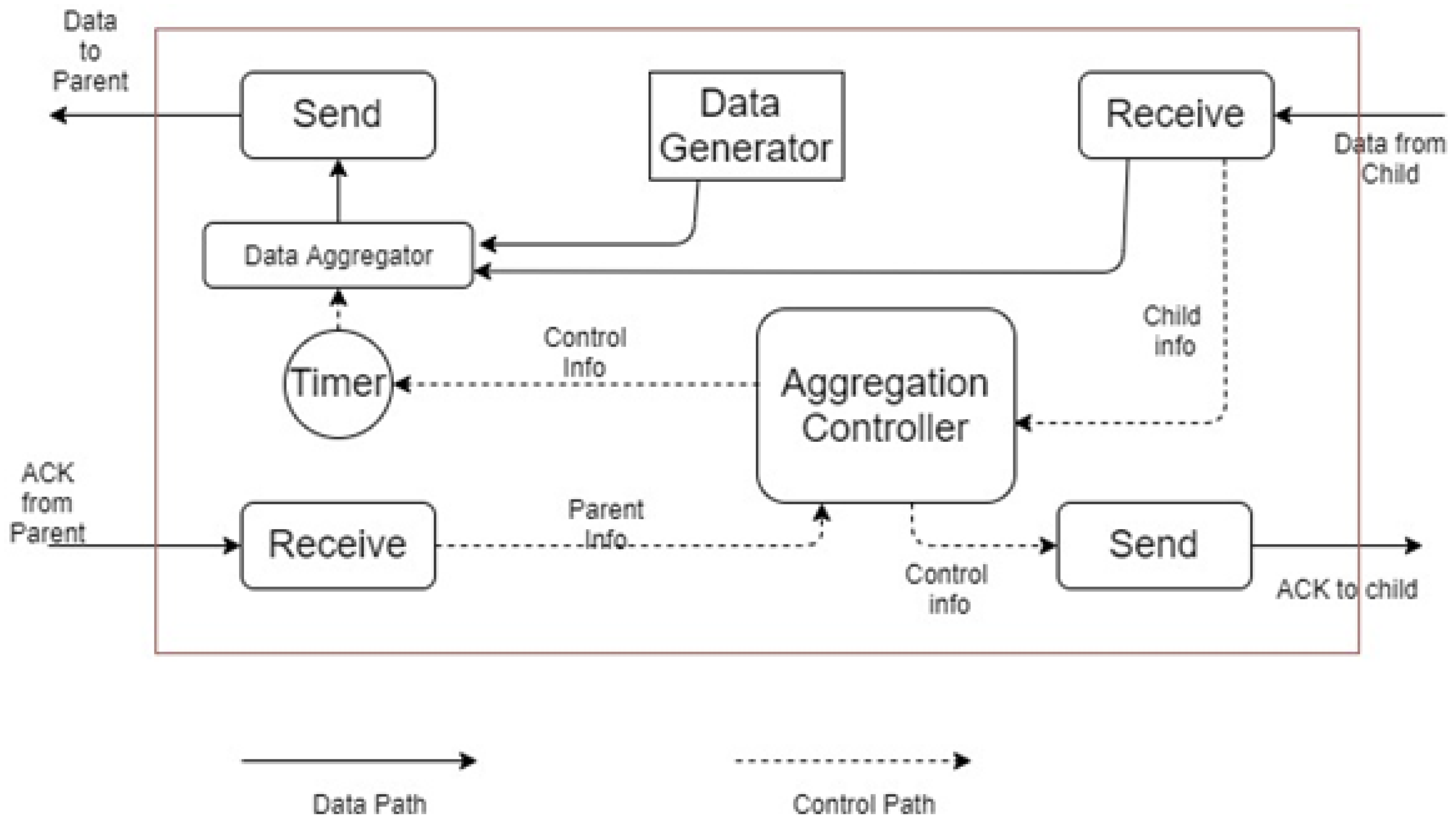
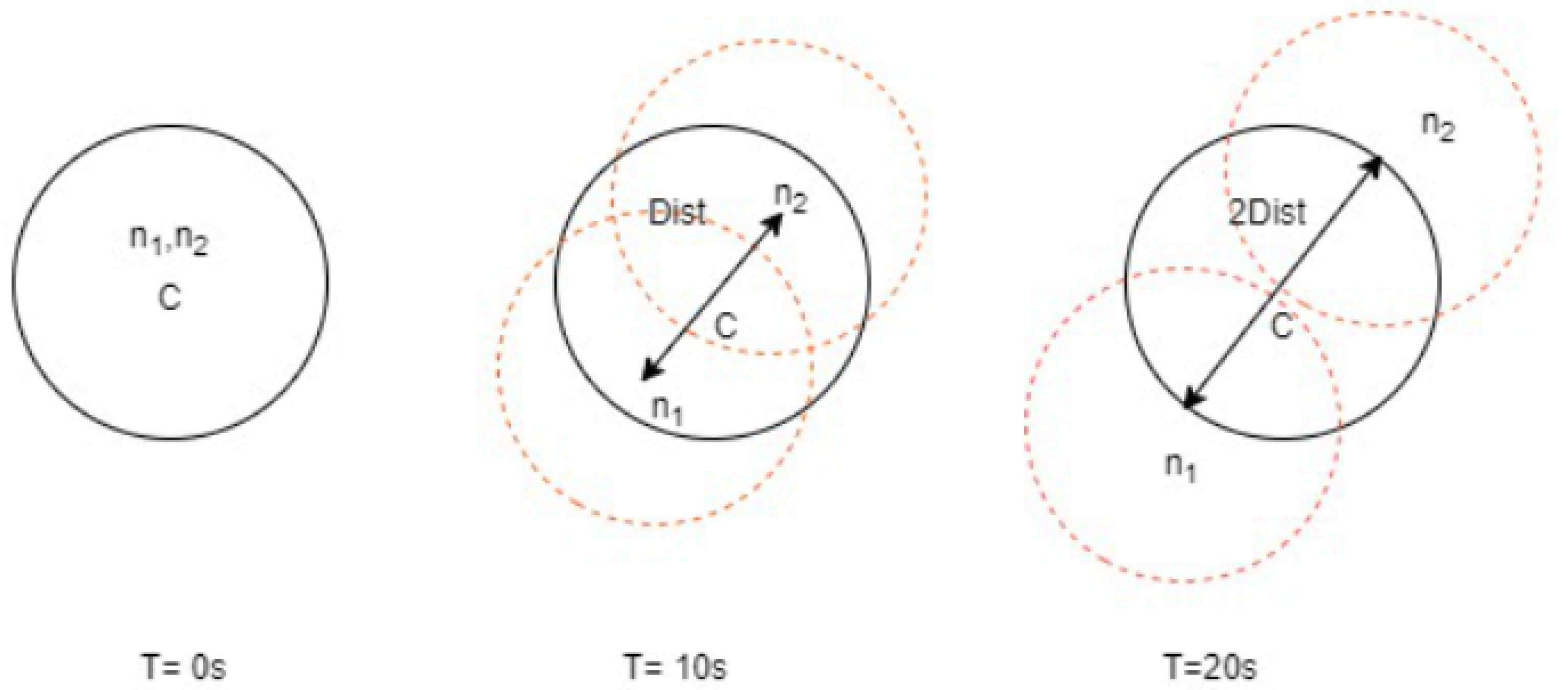


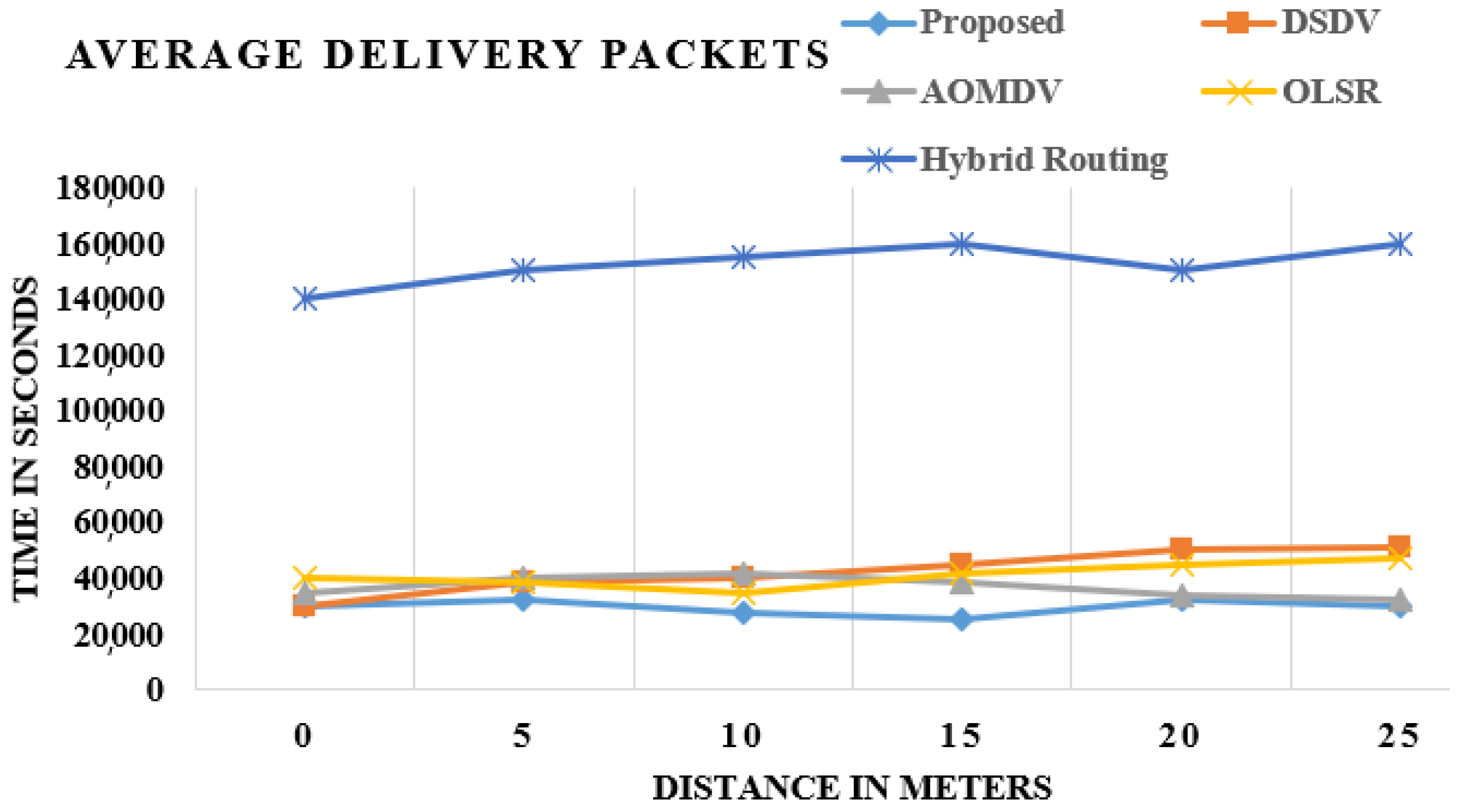
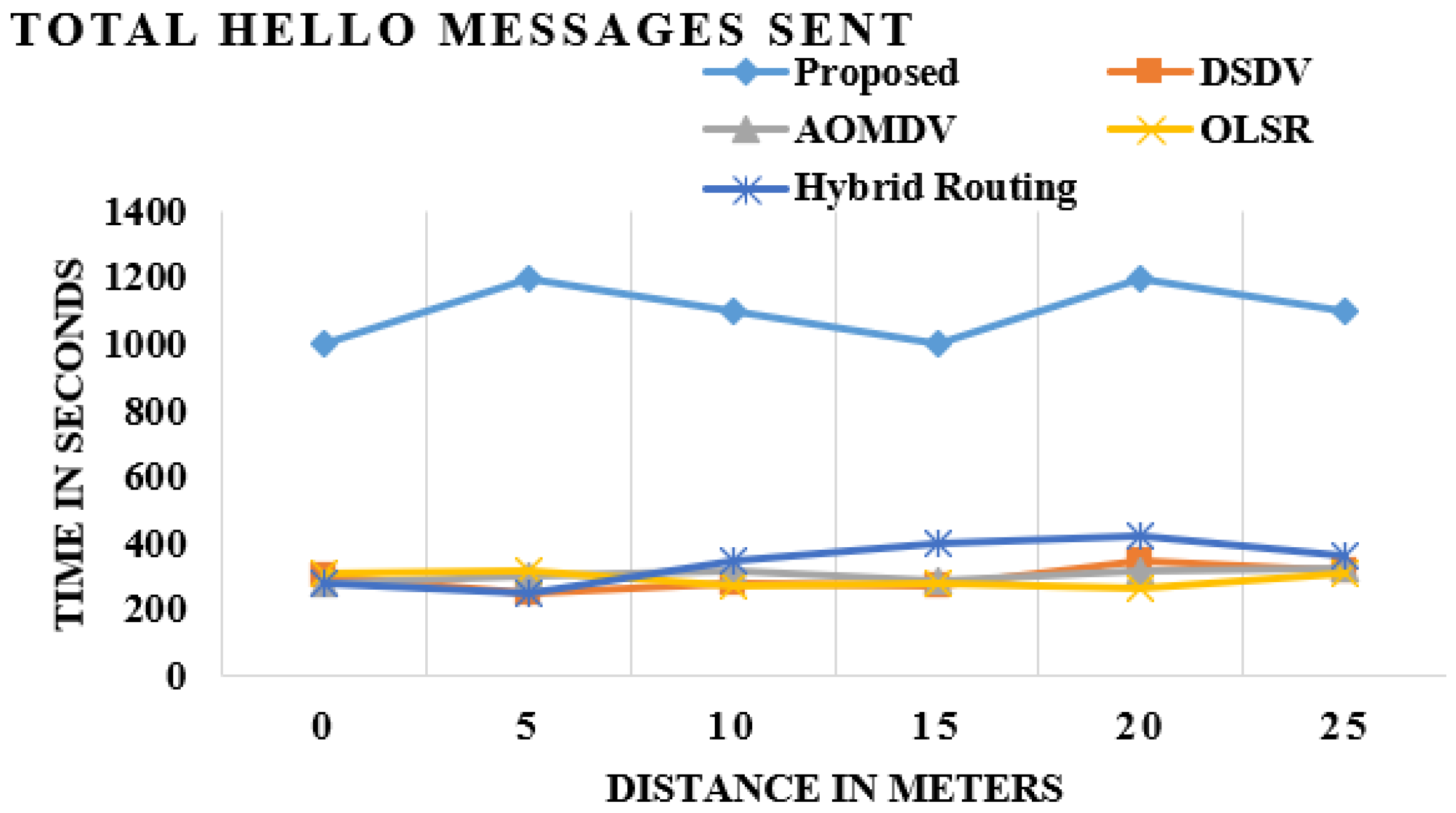

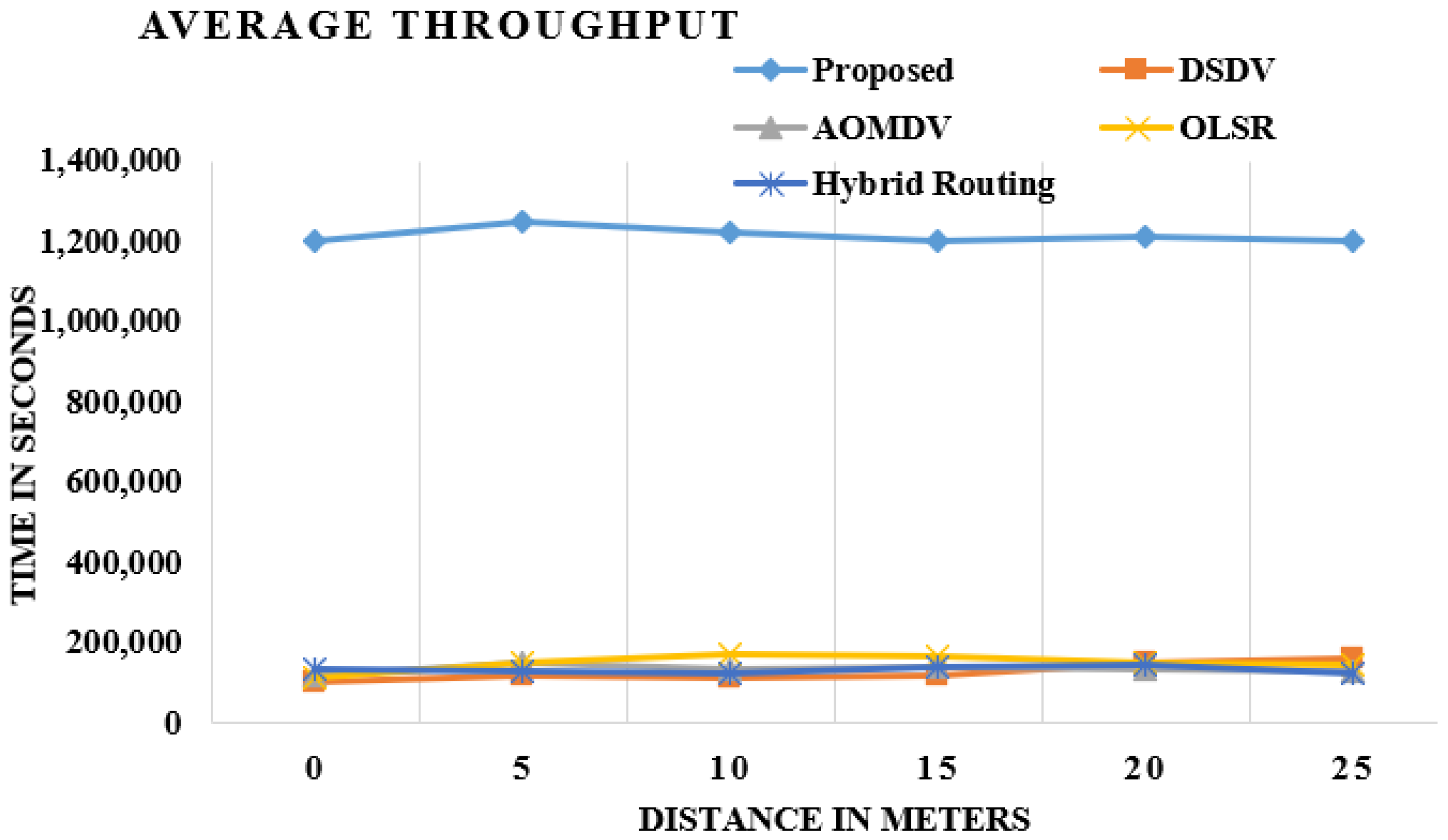
| Notation | Meaning |
|---|---|
| s | Speed |
| r | radius |
| BER | bit error rate |
| t | time |
| dist | distance |
| G | graph |
| V | vertices |
| E | edges |
| Si | set of nodes |
| Sm | set of multipoint nodes |
| Ss | set of source nodes |
| Sr | set of relay nodes |
| Sd | set of destination nodes |
| p | probability |
| Ni | nodes |
| Tc | topology control |
| Meaning | Symbol |
|---|---|
| Upper Bound of the Traffic | |
| Channel Capacity | cap |
| Total Capacity of all the links | tot |
| Service for node n at time t | tot |
| Effective Capacity | |
| Effective Bound | |
| Channel (k) Processing | |
| Degree of the processes received at time interval t | |
| Effective Capacity Function of Arrival Traffic | |
| Received Flow | |
| Difference between capacity of the channel and received flow | |
| Waiting time for the flow of traffic | Ti (t1) |
| Service Delay for the traffic | S |
| End to end delay | delay |
| Switching Delay between Source to Destination | delay (t1) |
| Delay between hops | endtoend |
| Bit loss due to switching | pkt |
| Bit Rate | avail |
Publisher’s Note: MDPI stays neutral with regard to jurisdictional claims in published maps and institutional affiliations. |
© 2021 by the authors. Licensee MDPI, Basel, Switzerland. This article is an open access article distributed under the terms and conditions of the Creative Commons Attribution (CC BY) license (https://creativecommons.org/licenses/by/4.0/).
Share and Cite
Rani, S.; Koundal, D.; Kavita; Ijaz, M.F.; Elhoseny, M.; Alghamdi, M.I. An Optimized Framework for WSN Routing in the Context of Industry 4.0. Sensors 2021, 21, 6474. https://doi.org/10.3390/s21196474
Rani S, Koundal D, Kavita, Ijaz MF, Elhoseny M, Alghamdi MI. An Optimized Framework for WSN Routing in the Context of Industry 4.0. Sensors. 2021; 21(19):6474. https://doi.org/10.3390/s21196474
Chicago/Turabian StyleRani, Shalli, Deepika Koundal, Kavita, Muhammad Fazal Ijaz, Mohamed Elhoseny, and Mohammed I. Alghamdi. 2021. "An Optimized Framework for WSN Routing in the Context of Industry 4.0" Sensors 21, no. 19: 6474. https://doi.org/10.3390/s21196474
APA StyleRani, S., Koundal, D., Kavita, Ijaz, M. F., Elhoseny, M., & Alghamdi, M. I. (2021). An Optimized Framework for WSN Routing in the Context of Industry 4.0. Sensors, 21(19), 6474. https://doi.org/10.3390/s21196474









